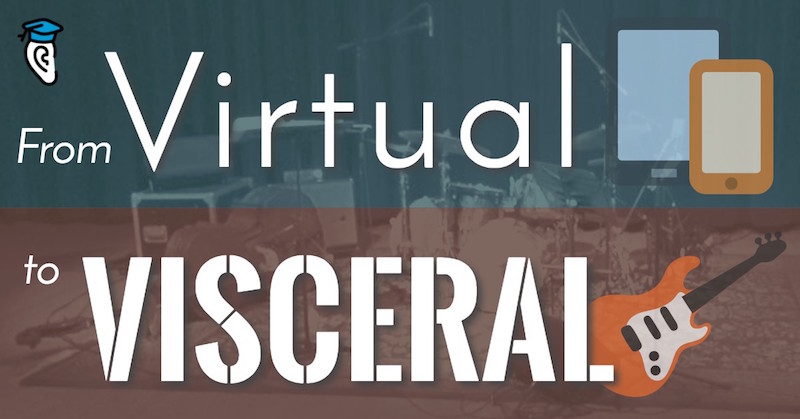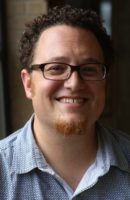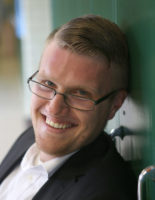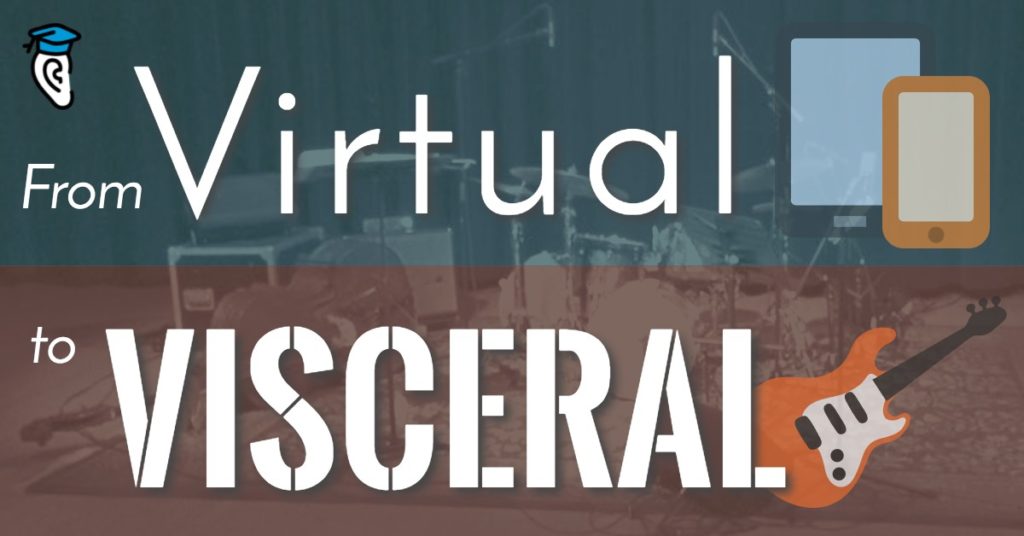A few weeks ago, we spoke with two cutting-edge suburban music teachers who are making it real for their students. Rather than using the internet as a crutch, Bob Habersat and Paul Levy are creating an innovative website to teach tomorrow’s musicians to teach themselves. Then they are turning their students on to the visceral experience of Chicago’s live music scene.


Paul Levy
Paul: The website began as a way for us to stay with the kids when we don’t see them. If we’re lucky, we can see them for a couple hours a day. But most of the time, their practice, and their obtainment of skills is done solitarily in a practice room. How do we, as educators, stay connected to that? That’s the impetus for that website.
Our school is lucky enough to be able to provide an iPad to every student, so why not utilize that technology? It’s a great way to hold the kids accountable, when it comes down to it.
Paul: At first they were not used to someone really putting the ball in their court, like, “I’m not going to tell you, you know where to find it. Go look.” This year is the first year that we’re over the hump. I’ve noticed a big improvement with the students just doing it on their own.
Bob: Every day, for general music classes, and for ensembles, we have a blog. The blog post usually has a tune that I’ll play at the beginning of class and their bell ringer activity. It focuses them into the class—that bell ringer activity has review, stretcher questions and links to other parts of the website. So if they don’t go to the website, they’re not ready for class.

Bob Habersat
The key to stimulating self-learning is not to teach something in class, but teach them where to find it on their own. Maybe we didn’t go over dotted quarter note rhythms, but the rhythm that they’ll be working with has a dotted quarter note. I won’t teach it to them, I’ll show them where on the website they can go to teach themselves. Then they’ll be able to figure it out. We integrate the website on a daily basis, and then we really encourage that self-learning.
I’ve been piloting different ways for sectional rehearsals, or individuals to submit recordings of their practice through the website to us, so we can hear what’s going on. We’re also developing simple goal planning and achievement tools.
That’s really encouraging to hear, and I have to say, I really admire that you are pushing that angle, because I think any educator these days would admit that we need more self-guided learners. In the age of the internet, kids are going to need to go out there and learn for themselves. Particularly when you get to college, it’s all on you.
We take a similar approach and Musical U, where we teach listening skills online, but most of our members are 18+, so they have a little more autonomy, more self-awareness, and self-motivation. It’s really impressive to hear that your students are internalizing that, even after a year, and starting to find the solutions for themselves.
Bob: It’s been a process. The more the students do on their own, the more we can branch out in the classroom—and even beyond the classroom. We live next to Chicago, so one of the best things that we do is take kids out to see shows. This Sunday, we’re taking two vans to the Chicago Jazz Fest. I think that’s become the biggest motivator for some of these students. Last year we saw Joey DeFrancesco last year for the first time.
That was the first time a lot of these kids saw jazz, and seeing their eyes when he starts soloing… it was like, “Holy cow!” and they’re hooked. That’s something that we can never have on the website. So now concert reviews are part of the curriculum.
Paul: Many kids don’t have the opportunity to go out. Even though we are 15 miles from downtown Chicago, some of these kids have never left this small suburb. I started to curate YouTube concerts for them—not albums, live concerts, so at least they can see it.
We took them to see Chris Potter last year, and it was like, “What?“
And we’re not just talking jazz. I’ve taken kids to see the Chicago Symphony. It’s an eye opening experience—not just hear the music, but to feel it. There’s something very primal, and organic, to be in a room where the music is being created. As an audience member, you are a participant in that performance—whether you realize it or not.
I took them to see Yo-Yo Ma, and none of these kids had ever seen classical music. We took them to see Chris Potter last year, and it was like, “What?” Just seeing musicianship, someone being able to play their instrument on a plane that they’ve never witnessed before… I have found that rather than feeling daunted, we are all inspired to see someone really crush their instrument.
Paul: The Musicianship 101 thing, that started for music theory class, but it’s become this mantra thing that all of our classes are tapping into. Then you found us, and we were both like, “How did they find this?” We’re just like a random high school, out of the millions of high schools in the United States. So now we’re reaching out to self-learners everywhere on our new website Shed the Music.
After inspiring so many students to become self-learners, Paul Levy and Bob Habersat have so much to offer us all in our own self-motivation to grow our musicality. Next time we’ll talk with them about more 21st-century teaching innovations in their fantastic jazz program. In the meantime, spend some time sharpening your chops with Bob and Paul at Shed the Music.







